Abstract
Cefonicid (SKF 75073) is a second-generation cephalosporin which has a spectrum of antimicrobial activity similar to that of cefamandole, but cefoxitin (a cephamycin) and cephalothin have uniquely different spectra of activity. The second-generation cephalosporins tested displayed comparable susceptibility to beta-lactamases and inhibited type I beta-lactamases. Although cefonicid has a longer serum half-life (3 to 4 h) compared with the currently used drugs, the same minimal inhibitory concentration breakpoints separating susceptible and resistant categories were applied to tests with cefonicid, cefamandole, and cephalothin. Regression analysis of the disk diffusion test results confirmed the use of identical zone size breakpoints for 30-micrograms cefonicid, cefamandole, and cephalothin disks: all three produced similar parabolic regression lines. Further analysis of disk test data confirmed the fact that cefonicid and cefamandole disks might be used interchangeably. But for routine tests, cefonicid disks might be preferred in order to minimize the number of very major (false-susceptible) interpretive errors. Suggested cefonicid 30-micrograms disk interpretive criteria are: susceptible, greater than or equal to 18 mm (less than or equal to 8.0 micrograms/ml), and resistant, less than or equal to 14 mm (greater than 16 micrograms/ml). Quality control zone diameter limits were calculated from data obtained in a multilaboratory collaborative study.
Full text
PDF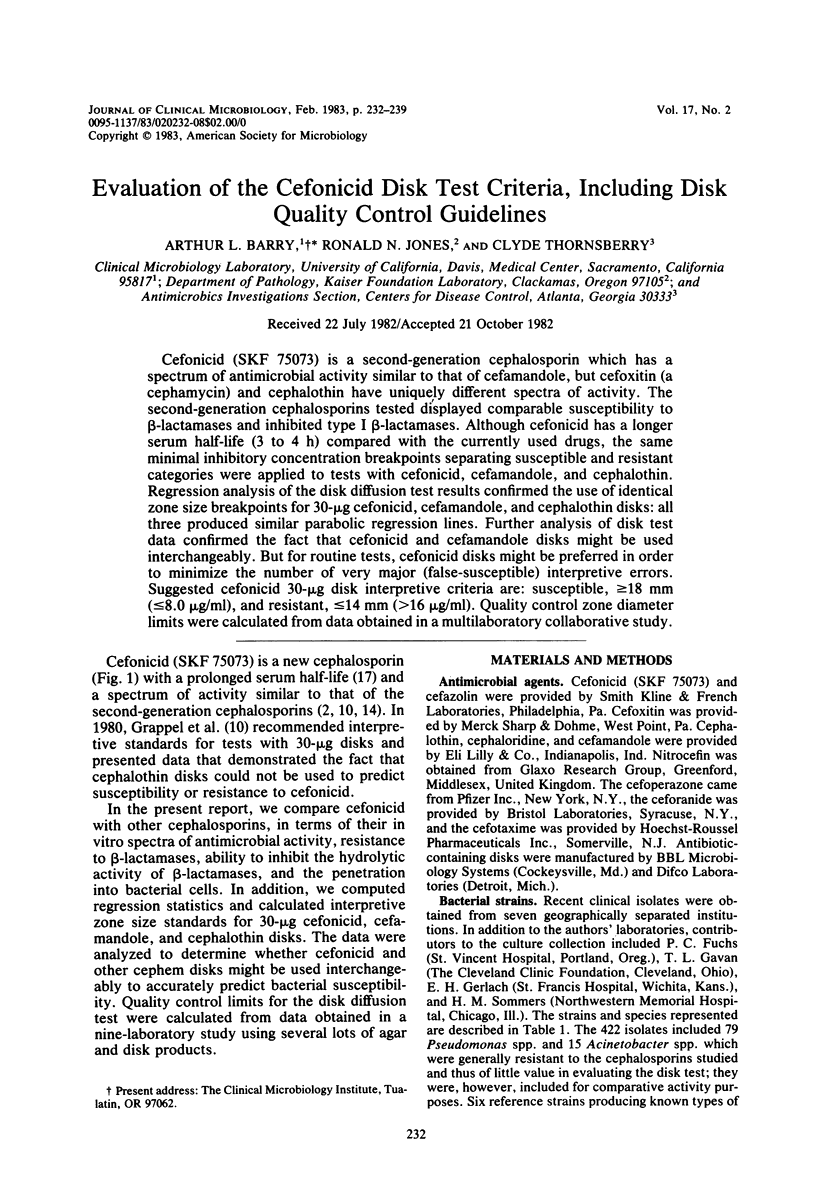
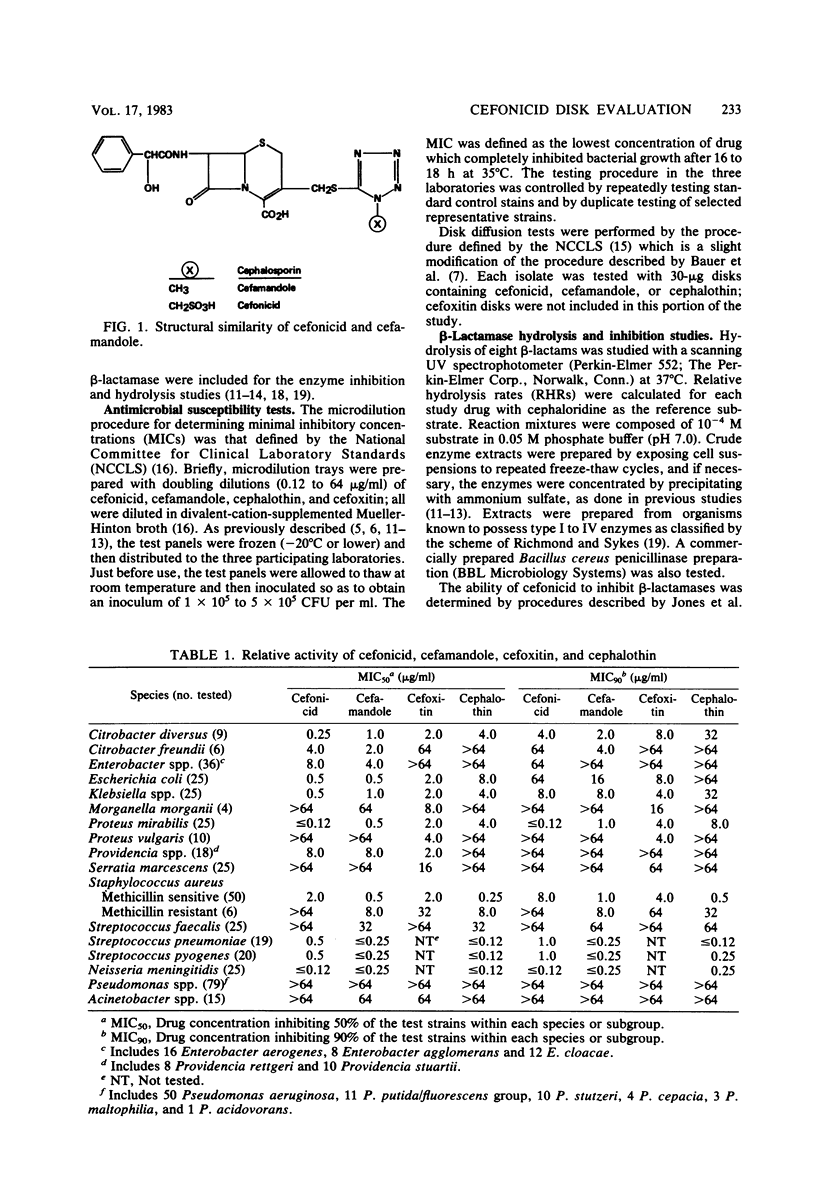
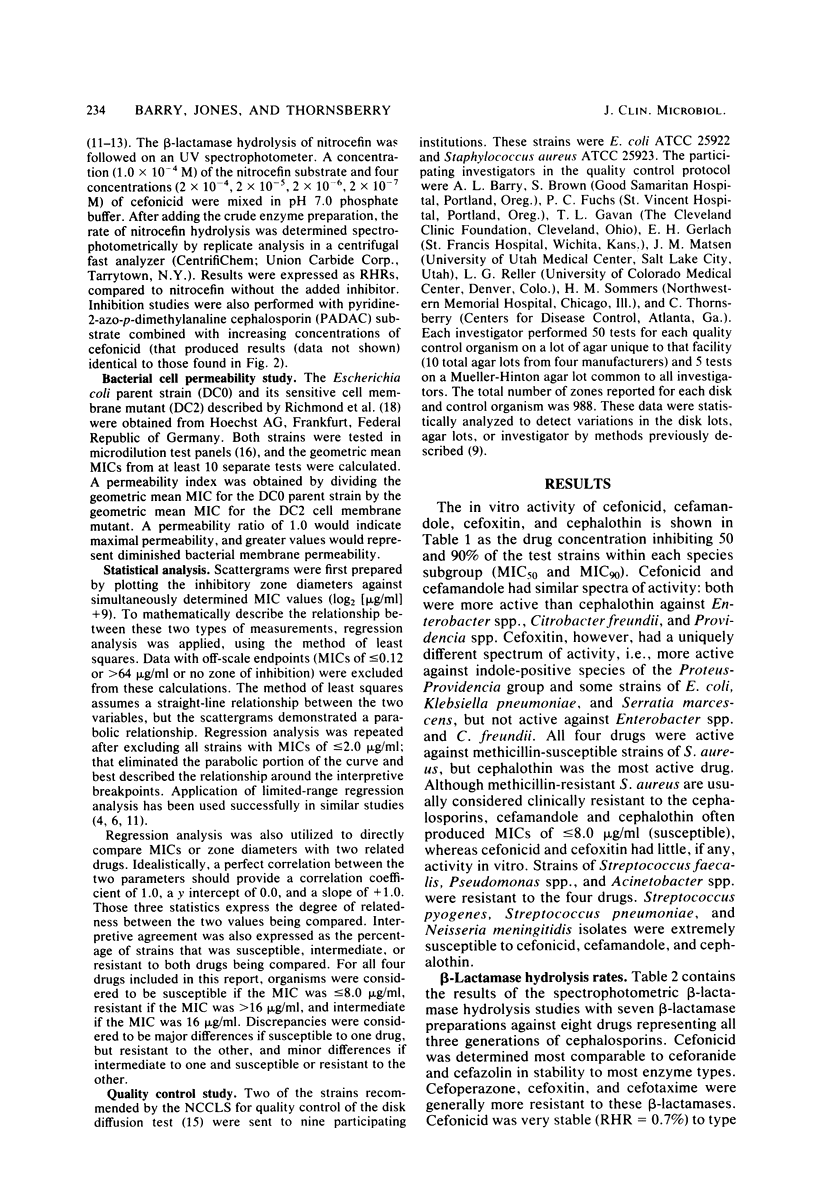
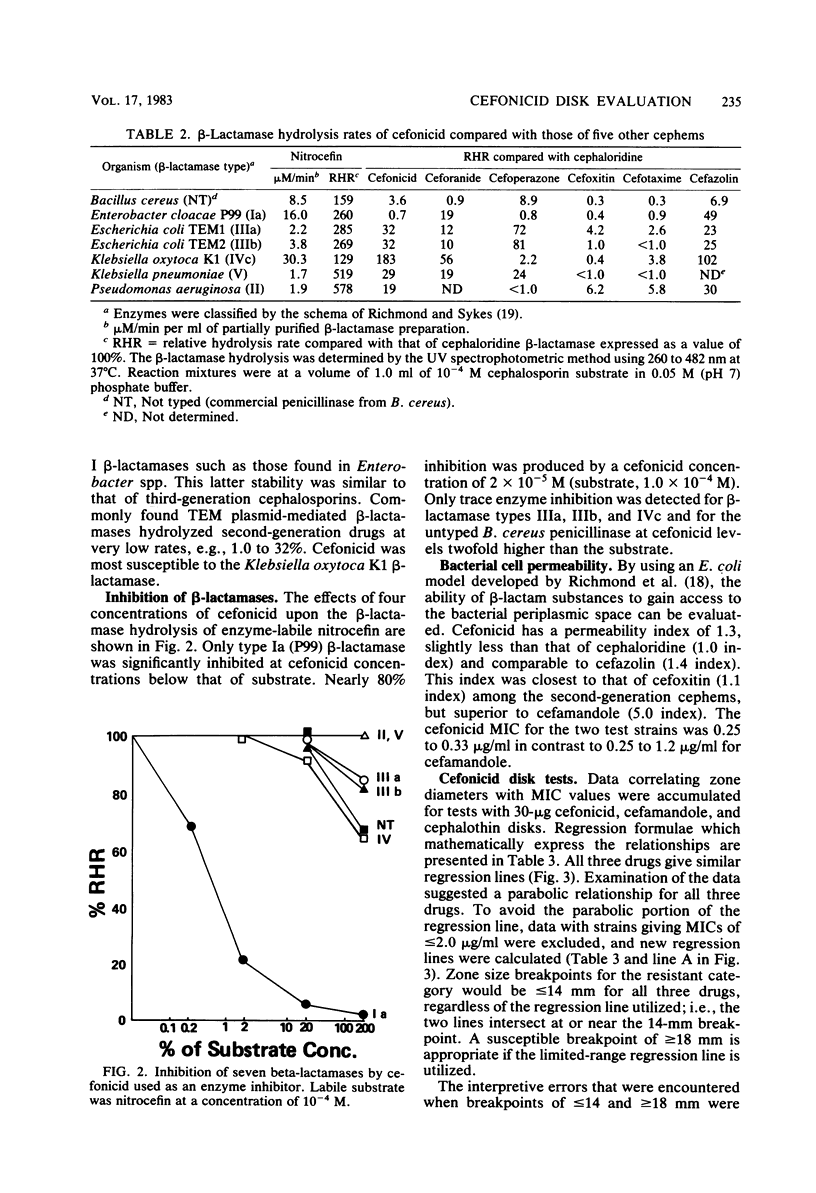
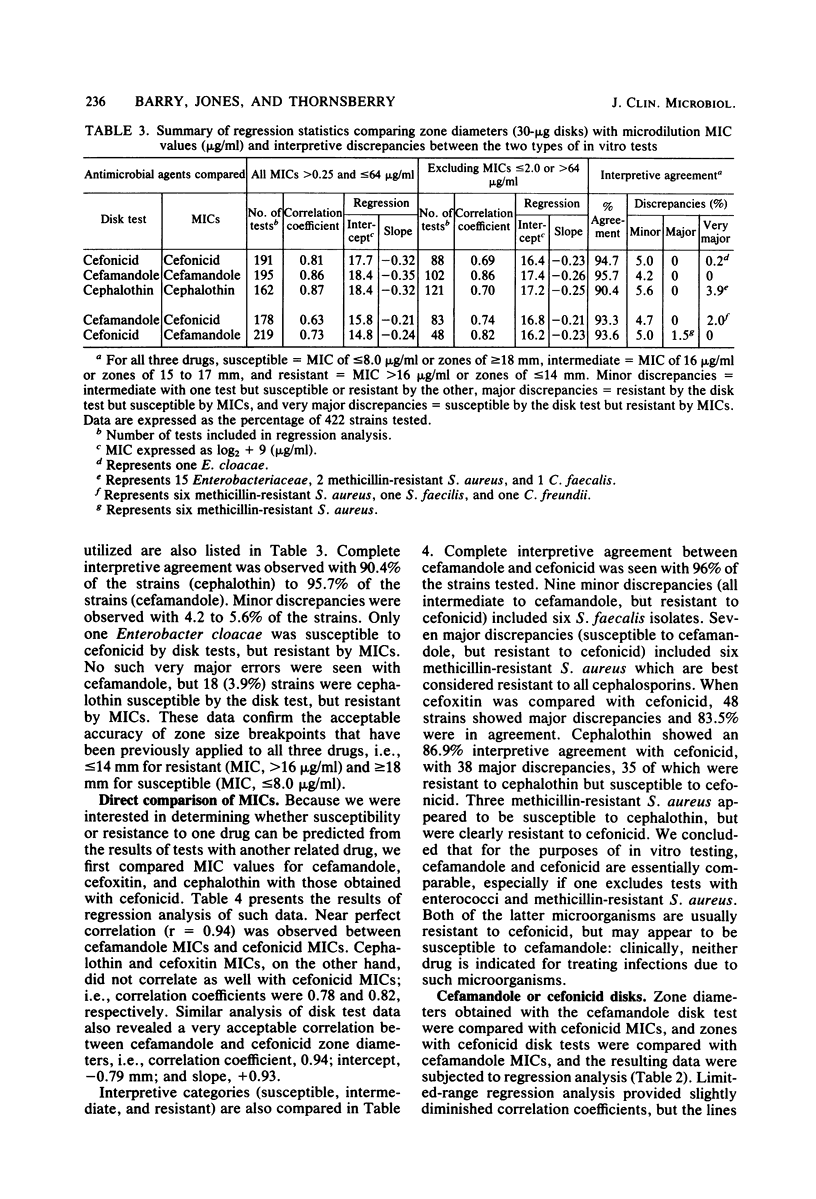
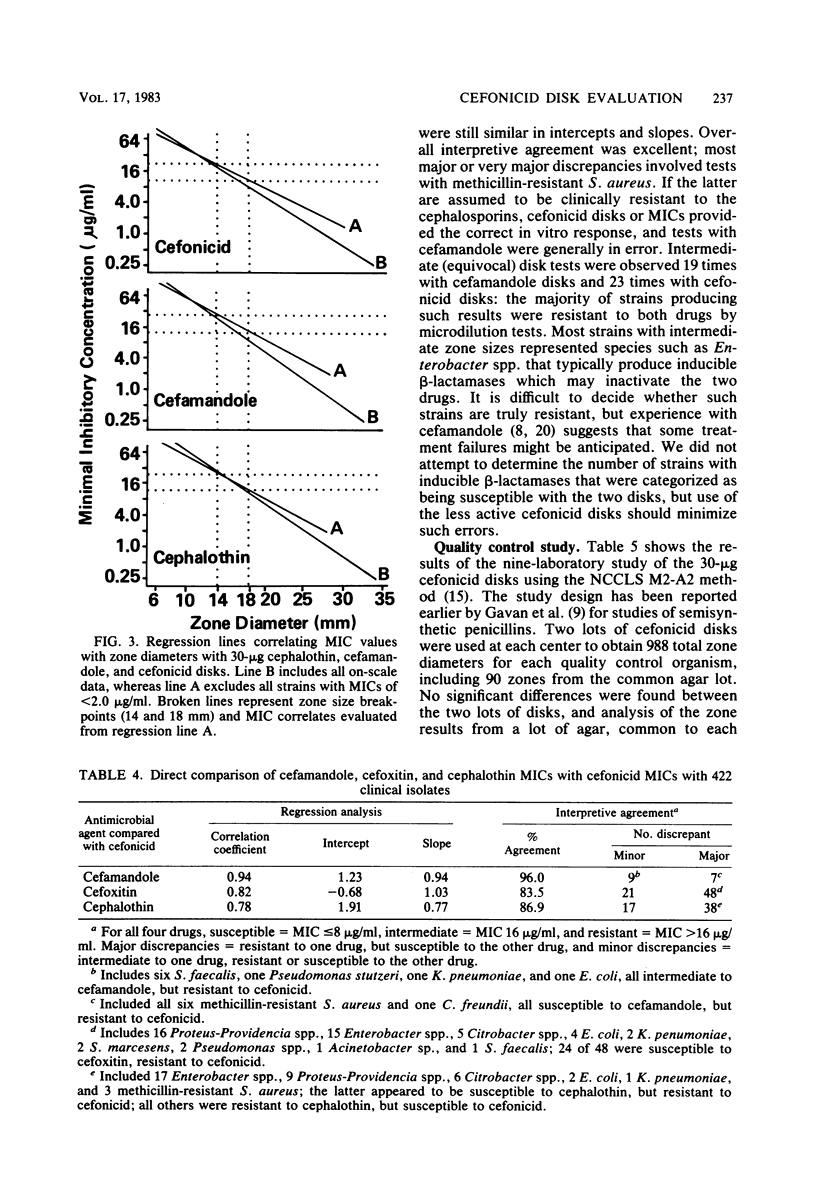
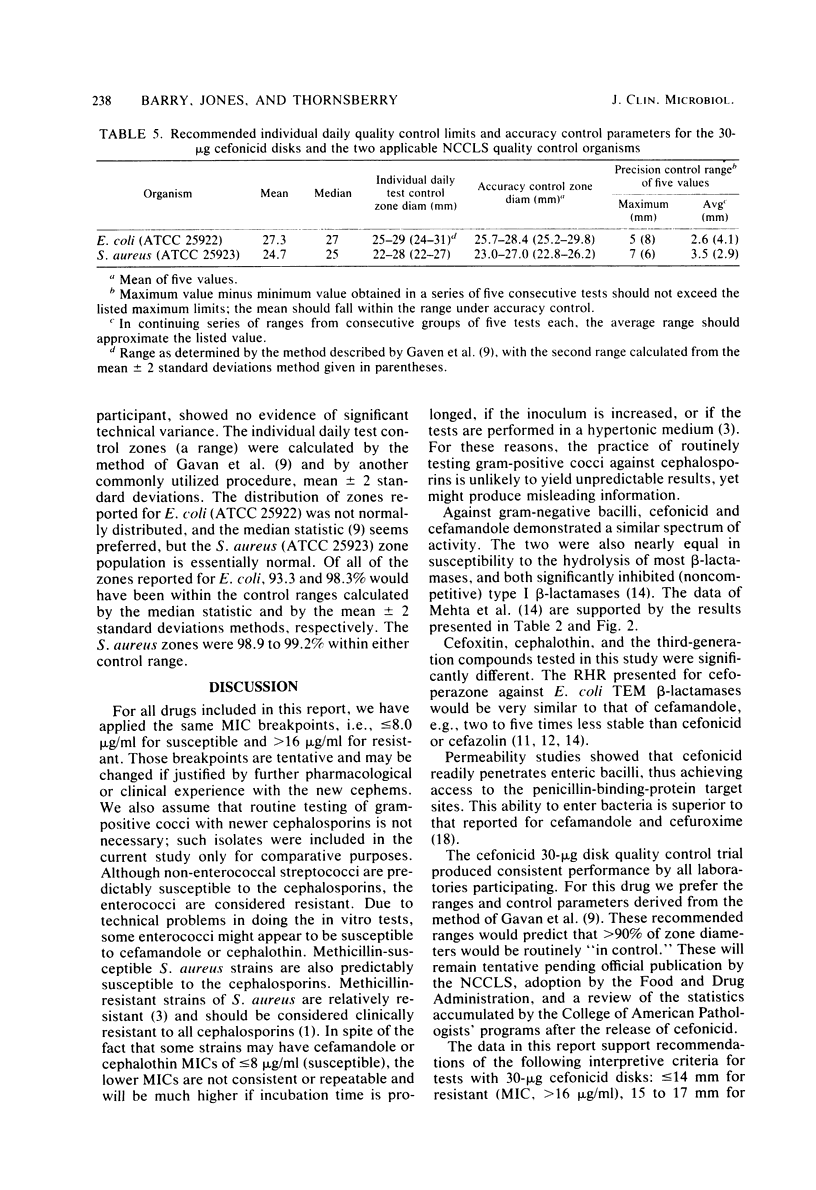
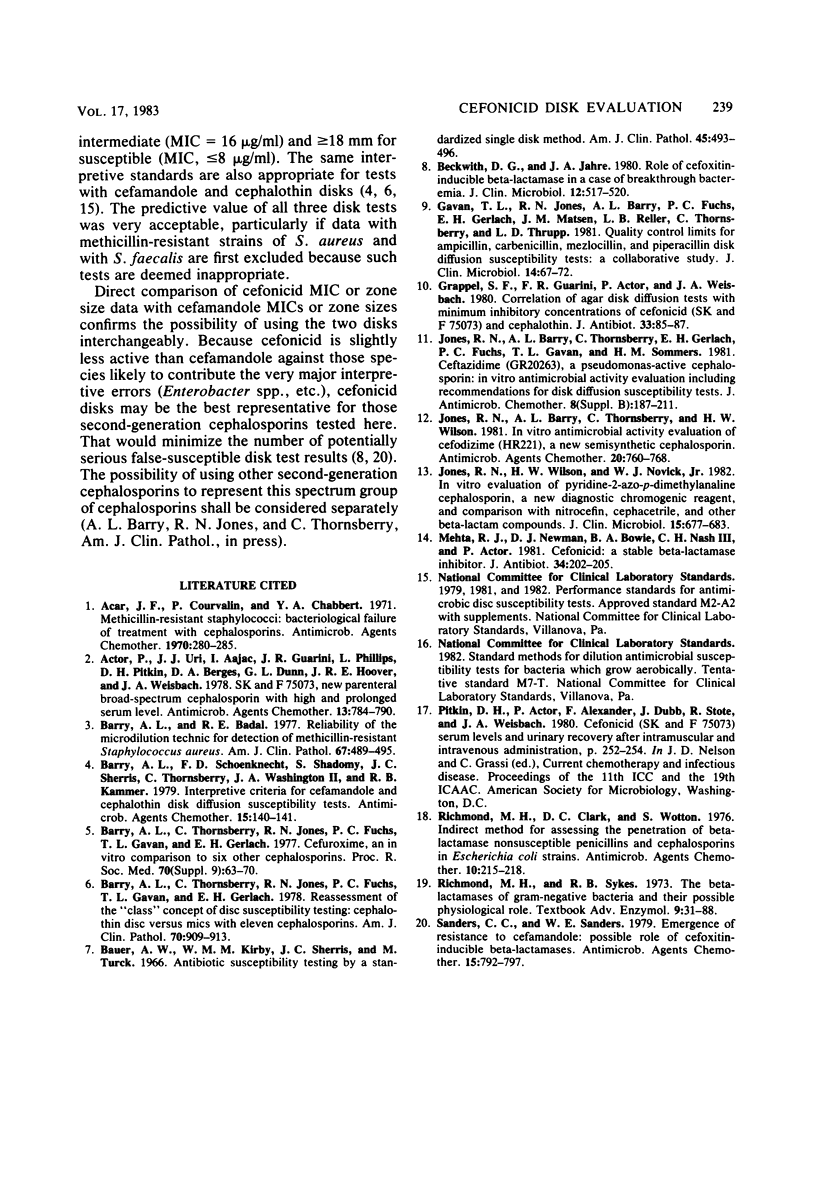
Selected References
These references are in PubMed. This may not be the complete list of references from this article.
- Actor P., Uri J. V., Zajac I., Guarini J. R., Phillips L., Pitkin D. H., Berges D. A., Dunn G. L., Hoover J. R., Weisbach J. A. SK&F 75073, new parenteral broad-spectrum cephalosporin with high and prolonged serum levels. Antimicrob Agents Chemother. 1978 May;13(5):784–790. doi: 10.1128/aac.13.5.784. [DOI] [PMC free article] [PubMed] [Google Scholar]
- Barry A. L., Badal R. E. Reliability of the microdilution technic for detection of methicillin-resistant strains of staphylococcus aureus. Am J Clin Pathol. 1977 May;67(5):489–495. doi: 10.1093/ajcp/67.5.489. [DOI] [PubMed] [Google Scholar]
- Barry A. L., Schoenknecht F. D., Shadomy S., Sherris J. C., Thornsberry C., Washington J. A., Kammer R. B. Interpretive criteria for cefamandole and cephalothin disk diffusion susceptibility tests. Antimicrob Agents Chemother. 1979 Jan;15(1):140–141. doi: 10.1128/aac.15.1.140. [DOI] [PMC free article] [PubMed] [Google Scholar]
- Barry A. L., Thornsberry C., Jones R. N., Fuchs P. C., Gavan T. L., Gerlach E. H. Cefuroxime, an in vitro Comparison with Six Other Cephalosporins. Proc R Soc Med. 1977;70(Suppl 9):63–71. doi: 10.1177/00359157770700S912. [DOI] [PMC free article] [PubMed] [Google Scholar]
- Barry A. L., Thornsberry C., Jones R. N., Fuchs P. C., Gavan T. L., Gerlach E. H. Reassessment of the "class" concept of disk susceptibility testing. Cephalothin disks versus minimal inhibitory concentrations with eleven cephalosporins. Am J Clin Pathol. 1978 Dec;70(6):909–913. doi: 10.1093/ajcp/70.6.909. [DOI] [PubMed] [Google Scholar]
- Bauer A. W., Kirby W. M., Sherris J. C., Turck M. Antibiotic susceptibility testing by a standardized single disk method. Am J Clin Pathol. 1966 Apr;45(4):493–496. [PubMed] [Google Scholar]
- Beckwith D. G., Jahre J. A. Role of a cefoxitin-inducible beta-lactamase in a case of breakthrough bacteremia. J Clin Microbiol. 1980 Oct;12(4):517–520. doi: 10.1128/jcm.12.4.517-520.1980. [DOI] [PMC free article] [PubMed] [Google Scholar]
- Gavan T. L., Jones R. N., Barry A. L., Fuchs P. C., Gerlach E. H., Matsen J. M., Reller L. B., Thornsberry C., Thrupp L. D. Quality control limits for ampicillin, carbenicillin, mezlocillin, and piperacillin disk diffusion susceptibility tests: a collaborative study. J Clin Microbiol. 1981 Jul;14(1):67–72. doi: 10.1128/jcm.14.1.67-72.1981. [DOI] [PMC free article] [PubMed] [Google Scholar]
- Grappel S. F., Guarini J. R., Actor P., Weisbach J. A. Correlation of agar-disc-diffusion tests with minimum inhibitory concentrations of cefonicid (SK&F 75073) and cephalothin. J Antibiot (Tokyo) 1980 Jan;33(1):85–87. doi: 10.7164/antibiotics.33.85. [DOI] [PubMed] [Google Scholar]
- Jones R. N., Barry A. L., Thornsberry C., Wilson H. W. In vitro antimicrobial activity evaluation of cefodizime (HR221), a new semisynthetic cephalosporin. Antimicrob Agents Chemother. 1981 Dec;20(6):760–768. doi: 10.1128/aac.20.6.760. [DOI] [PMC free article] [PubMed] [Google Scholar]
- Jones R. N., Wilson H. W., Novick W. J., Jr In vitro evaluation of pyridine-2-azo-p-dimethylaniline cephalosporin, a new diagnostic chromogenic reagent, and comparison with nitrocefin, cephacetrile, and other beta-lactam compounds. J Clin Microbiol. 1982 Apr;15(4):677–683. doi: 10.1128/jcm.15.4.677-683.1982. [DOI] [PMC free article] [PubMed] [Google Scholar]
- Mehta R. J., Newman D. J., Bowie B. A., Nash C. H., 3rd, Actor P. Cefonicid: a stable beta-lactamase inhibitor. J Antibiot (Tokyo) 1981 Feb;34(2):202–205. doi: 10.7164/antibiotics.34.202. [DOI] [PubMed] [Google Scholar]
- Richmond M. H., Clark D. C., Wotton S. Indirect method for assessing the penetration of beta-lactamase-nonsusceptible penicillins and cephalosporins in Escherichia coli strains. Antimicrob Agents Chemother. 1976 Aug;10(2):215–218. doi: 10.1128/aac.10.2.215. [DOI] [PMC free article] [PubMed] [Google Scholar]
- Richmond M. H., Sykes R. B. The beta-lactamases of gram-negative bacteria and their possible physiological role. Adv Microb Physiol. 1973;9:31–88. doi: 10.1016/s0065-2911(08)60376-8. [DOI] [PubMed] [Google Scholar]
- Rotimi V. O., Turk D. C. Transferable multiple antibiotic resistance in Haemophilus influenzae. J Antimicrob Chemother. 1981 Sep;8(3):187–192. doi: 10.1093/jac/8.3.187. [DOI] [PubMed] [Google Scholar]
- Sanders C. C., Sanders W. E., Jr Emergence of resistance to cefamandole: possible role of cefoxitin-inducible beta-lactamases. Antimicrob Agents Chemother. 1979 Jun;15(6):792–797. doi: 10.1128/aac.15.6.792. [DOI] [PMC free article] [PubMed] [Google Scholar]


